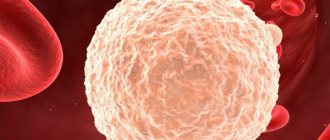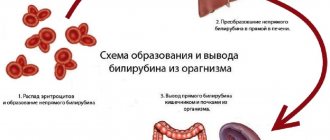Types of Blood Tests for Dogs
Both tests - general and blood biochemistry - will help determine the presence of pathologies and abnormalities in dogs. To check all systems and fabrics, it is recommended to test both of them at once.
Clinical blood test (general hemogram)
The first thing that specialists prescribe after an examination is a general blood test. Thanks to a general blood test (CBC), you can determine the general condition of the dog and the presence of deviations in the functioning of the systems. To make a reliable diagnosis, a specialist will study all the elements together, and not separately.
Blood chemistry
The results of the biochemistry of a dog’s blood will help to study the functioning of organs and tissues, and determine disturbances in the functioning of systems.
Carrying out biochemical analysis is an indispensable diagnostic procedure for identifying complex, including hidden pathologies. It is prescribed by a doctor, however, for preventive purposes, the owner can sign up for a clinic to submit biological material for testing.
Why is the hematocrit in the blood low, what does this mean?
Hematocrit is an indicator that determines the content of red blood cells (erythrocytes) in its total volume. Measured as a percentage. Determined by a general blood test. The hematocrit indicator determines the ability of blood to carry oxygen to the tissues of the body.
In adults, a low hematocrit indicates that there is a risk of anemia. When the hematocrit is low, extreme caution and attention to your health is required - the reasons are ambiguous.
To make a correct diagnosis, special tests are performed to determine the percentage of red blood cells to plasma volume. They are able to provide information to specialists to accurately determine the causes of low hematocrit.
Norm
Before talking about reducing the level of hematocrit in the blood, it is necessary to know the standard values of the indicator, based on the gender and age of the patient.
Since a low hematocrit level indicates anemia, it is natural that the causes of anemia are the factors that reduce this indicator. All factors that contribute to the development of anemia will also cause a decrease in hematocrit in the blood in adults.
What does a low hematocrit mean?
A lack of red blood cells negatively affects the general condition of the body. With a low hematocrit, an adult experiences general malaise, high fatigue, shortness of breath, pale skin, rapid heartbeat, headaches, and hair loss.
This is due to the fact that red blood cells deliver nutrients and oxygen to each cell, while taking away carbon dioxide. With a low hematocrit, the volume of red blood cells per liter of blood becomes less than normal, so human cells experience oxygen starvation. At the same time, the acid-base balance and the operating mode of each
Source
How to prepare your dog for testing
To collect biological material, it is recommended to call a veterinary clinic specialist to your home. A visit to a hospital is a serious stress for any animal. In order not to distort the results of blood tests taken from a pet, stress should be avoided - at home the pet will be calmer.
Restrictions:
- When taking a clinical test, you need to limit your diet 3 hours before collection.
- For biochemical analysis, it is necessary to limit food for 8 hours.
- Water is excluded from the diet 2 hours before analysis.
If a pet is being treated with medications, the specialist is warned about this in advance. On the day of blood donation, medications must be taken after visiting the clinic.
If lymphocytes in dogs are high or low
As with human diseases, among our smaller brothers a blood test is important for diagnosing diseases. The doctor's attention is drawn to all indicators, especially the number of lymphocytes. This is one of the subspecies of white blood cells that, unlike their relatives, are capable of acting repeatedly and not dying after the first attack.
Lymphocytes provide specific immunity by identifying foreign antigens and producing an adequate response - antibodies that can selectively destroy foreign “intruders”. They are indicators of the functioning of the animal’s immune system, so they immediately make it possible to suspect the presence of a particular disease.
How to take a blood test
To donate blood for analysis, you need to either come to a veterinary clinic or call a specialist at home.
The material is taken from the front or back paw. If the dog is aggressive, it is necessary to put a muzzle on it. The procedure is painless, but for shy dogs it can be very unpleasant, which also often leads to outbreaks of aggression. In some cases, the animal may be restrained on the table using local anesthesia to sedate it.
You can get results from an express test within 1-2 hours after taking the tests, but most often they will be ready by the evening.
Read Signs of distemper in dogs: how to treat at home, types and consequences
White blood cells
There are several different types of white blood cells in a dog's body, all of which are used to fight infection and inflammation. These cells are made in your dog's bone marrow or lymphoid tissue, such as the spleen and lymph nodes. Five types of white blood cells in your dog :
- neutrophils,
- lymphocytes,
- eosinophils,
- monocytes,
- basophils.
Each type of white blood cell works slightly differently. The main white blood cells that fight infection are neutrophils and lymphocytes. Neutrophils, eosinophils, and monocytes engulf invading particles and infectious agents to neutralize them, while lymphocytes produce specialized antibodies to destroy these agents.
© shutterstock
What physiological indicators are examined?
Studying the composition of a dog’s blood will allow us to detect pathological processes occurring in the pet’s body at an early stage.
Clinical blood test in dogs
Important UAC indicators:
- Hemoglobin, responsible for transporting oxygen through tissues. Deviations may indicate various pathologies of organs, heart, and gastrointestinal tract.
- Red blood cells. Also responsible for oxygen transport. A decrease or increase in this indicator may indicate liver disease or anemia.
- Leukocytes. “Defenders” of dogs from infectious pathologies and neoplasms. They are an important element of immunity. When performing OAC, neutrophil indicators are important - they are the first to “respond” in the presence of foreign agents.
- Lymphocytes. Participate in the production of antibodies and respond to the body’s immune reactions. Deviation from the norm is associated with a cold, exposure to bacterial agents, and depletion of the body's defenses.
Other important indicators include platelets, ESR, hematocrit, myelocytes and plasma cells.
Biochemistry of dog blood
The LHC examines many physiological indicators, but the main ones include:
- ALT and AST. Important elements of amino acid metabolism. The reasons for changes in indicators may be heart disease, problems with internal organs.
- Creatine phosphokinase. The change indicates serious problems in the body that require immediate treatment.
- Lactate dehydrogenase. Changes in diseases of the gastrointestinal tract and heart.
- Amylase is responsible for the breakdown of carbohydrates. Deviation from the norm may indicate gastrointestinal diseases.
- Albumin is involved in protein metabolism and is responsible for the delivery of nutrients. Changes are more often associated with liver dysfunction
- Urea, creatinine. Enzymes indicating malfunction of the kidneys.
- Glucose. An important element of carbohydrate metabolism.
- Cholesterol. An element involved in fat metabolism.
Also, in LHC, indicators of electrolytes, glutamate dehydrogenase, and lipids are examined.
On average, a specialist takes about 2 ml of biological material from a vein for research.
How to know if something is wrong
Symptoms that are typically associated with the cause of a high white blood cell count include:
- If the cause is an infection , symptoms will appear as fever, lack of appetite, moodiness and fatigue. If the infection is external, there may be a rash, wound, or abscess;
- If the cause is parasites such as heartworm, symptoms include cough, fatigue and weight loss. Tapeworms will cause bloating or swelling, increased appetite, and lethargy;
- If the cause is an autoimmune disease , symptoms will vary depending on the disease. There may be swollen joints, or hair loss and skin sores, or fever and fatigue;
- If the cause is leukemia or other types of cancer , symptoms typically appear as swollen lymph nodes, weight loss, frequent urination, increased thirst, and fatigue;
- If the cause is an allergy , symptoms include persistent itching and scratching;
- If the cause is stress , symptoms will appear as moodiness, aggressiveness, decreased social interaction and decreased appetite.
Tables of indicator norms
Clinical indicators
| Index | Normal up to 1 year | Normal for adult pets |
| Hematocrit | 23-52 | 37-55 |
| Hb | 70-180 | 115-185 |
| Red blood cells | 3,2-7,5 | 5,3-8,6 |
| Color indicator | *has no diagnostic value | 0,73-1,06 |
| Segmented neutrophils | 1300-11000 | 3000-11500 |
| Average hemoglobin content in an erythrocyte | — | 21-27 |
| ESR | — | 2-8 |
| Leukocytes | 7,2-18,6 | 6-17 |
| Eosinophils | up to 2000 | 100-1200 |
| Basophils | Up to 100 | Up to 55 |
| Lymphocytes | 1650-6450 | 1100-4800 |
| Monocytes | Up to 400 | 160-1400 |
| Myelocytes | *not present in a healthy pet | *not present in a healthy pet |
| Reticulocytes | 0-7,4 | 0,3-1,6 |
| Plasmocytes | *not present in a healthy pet | *not present in a healthy pet |
| Platelets | — | 250-550 |
Biochemical standard indicators
Standard table:
| Indicators | Norm |
| Glucose | 4,2-7,3 |
| pH | 7,35-7,45 |
| Protein | 38-73 |
| Albumin | 22-40 |
| Urea | 3,2-9,3 |
| Cholinesterase | 2200-4900 |
| Albumen | < 450 |
| TSH | 0,03-0,5 |
| Creatine kinase (CPK) | 0-130 |
| LDH (lactate dehydrogenase) | 23-220 |
| Alanine aminotransferase rate | 9-52 |
| Aspartate aminotransferase rate | 11-42 |
| Total bilirubin | 3,1-13,5 |
| Direct bilirubin | 0-5,5 |
| Creatinine | 26-120 |
| General lipids | 6-15 |
| Cholesterol | 2,4-7,4 |
| Triglycerides | 0,23-0,98 |
| Lipase | 30-250 |
| ɑ-amylase | 685-2155 |
| Alkaline phosphatase | 19-90 |
| Acid phosphatase | 1-6 |
| GGT | 0-8,5 |
Table of electrolyte standards:
| Indicators | Norm |
| Phosphorus | 0,8-3 |
| Total calcium | 2,26-3,3 |
| Sodium | 138-164 |
| Magnesium | 0,8-1,5 |
| Potassium | 4,2-6,3 |
| Chlorides | 103-122 |
Studying a leukogram and biochemistry is a reliable way to determine the condition of your pet.
Read The best anti-allergy injections and tablets for dogs
Interpretation of blood test results
Decoding the results will tell you a lot about the dog’s health: you can detect inflammatory processes, bacterial or viral infection, the presence of parasites, and cancer.
Clinical blood test
UAC decoding table:
| Index | What does it mean if downgraded? | What does it mean if it's elevated? |
| Hematocrit | Anemia | dehydration of the body; leukemia |
| Hb | anemia; bleeding. | dehydration; blood diseases. |
| Red blood cells | anemia; bleeding. | leukemia; heart diseases. |
| ESR | epilepsy; erythrocytosis; reaction to the introduction of calcium chloride. | tissue necrosis; infectious diseases; parasites; reaction to stress; poisoning; neoplasms; injuries; postoperative period; pregnancy. |
| Leukocytes | diseases caused by viruses and bacteria; allergy; presence of metastases; response to therapy with anticonvulsants, sulfonamides. | necrosis; bacterial infections; poisoning; malignant tumors. |
| Band neutrophils (granulocytes) | pathologies occurring in a chronic form (may not have symptoms); genetic abnormalities; diseases of a viral nature. | the beginning of the inflammatory process; poisoning; stress suffered by the animal. |
| Eosinophils | *indicators are not important for diagnosis | allergy; damage to the body by parasites; myeloid leukemia. |
| Basophils | *indicators are not important for diagnosis | allergy; chronic inflammatory processes in the gastrointestinal tract; leukemia |
| Lymphocytes | neoplasms; treatment with corticosteroids; kidney and liver diseases. | viral infections; treatment with NSAIDs; toxoplasmosis. |
| Monocytes | Long-term treatment with hormonal medications | infections; piroplasmosis; tuberculosis is one of the causes of monocytosis; colitis. |
| Myelocytes | *not normally detected | sepsis; severe stress; inflammatory processes in the body; myeloid leukemia; copious blood loss. |
| Reticulocytes | The main reason is anemia. | Hypoxia most often causes an increase in the indicator. |
| Plasmocytes | *not normally detected | severe viral infections; tumors; tuberculosis. |
| Platelets | Long-term treatment with antibiotics and diuretics. | leukemia; postoperative period; treatment with corticosteroids. |
Blood biochemistry
Table of interpretation of biochemical analysis in dogs:
| Index | Reasons for the downgrade | Reasons for the increase |
| pH | The indicator usually decreases after heavy exercise, due to kidney problems, and an increase in the level of CO₂ in the blood. | The main reasons: alkalemia or intestinal problems, manifested by prolonged diarrhea. |
| Glucose | Decreases in pancreatic pathologies, due to severe poisoning, insulin overdose. A common cause is starvation of your pet. | Severe physical activity, diabetes, and diseases of internal organs can cause an increase in the indicator. |
| Protein | The decrease usually occurs simultaneously with a decrease in albumin levels. | Protein can increase in the presence of multiple myeloma, with a lack of water in the diet. |
| Albumin | The main reasons: starvation, kidney pathologies, problems with the absorption of nutrients in the intestines, severe burns. | A common cause is dehydration. |
| Urea | A decrease is usually observed with a lack of protein. But the indicator also changes during pregnancy. | Kidney disease and an unhealthy diet with excess protein foods can lead to an increase. |
| ALT (ALaT) | * have no diagnostic value | The indicator is exceeded in case of burns as a result of drug poisoning. But it can also indicate the breakdown of muscle cells. |
| AST (ASaT) | One of the most common reasons is a lack of vitamin B6 in the body. More serious causes include necrotic processes in liver tissue. | It usually increases with severe sunstroke, after physical exercise, or due to burns. But an increase in AST may indicate the development of heart failure. |
| Globulins | A reduced level can be observed after infections as a result of decreased immunity. But it can also indicate the development of diabetes and pancreatitis. | It increases with exacerbation of chronic pathologies, due to cellular infiltration, which can be observed with the development of inflammation. |
| Total bilirubin | * have no diagnostic value | More often, an increase is observed when there are problems with the liver, due to blockage of the bile ducts. |
| Direct bilirubin | * have no diagnostic value | The main reasons: stagnation of bile and the development of liver diseases. A serious cause that requires immediate treatment is purulent damage to the organ. |
| Creatinine | Decreases in bitches during pregnancy. | An elevated level indicates kidney problems, malfunctions of the thyroid gland. |
| Lipids | * indicators are not important for diagnosis | Increased due to diabetes and pancreatitis. The increase is often accompanied by therapy with glucocorticoids. |
| Cholesterol (cholesterol) | Most often it is a sign of a dog’s malnutrition. But it may indicate: a tumor: liver disease. | Indicates liver problems and impending cardiac ischemia. |
| Triglycerides | They decrease due to the penetration of an infectious agent in pathologies of the pulmonary system. But it can also be caused by prolonged fasting. | May indicate diabetes. Observed during the period of gestation of puppies. |
| Lipase | Gastric and pancreatic cancer. | Usually the increase is associated with cancer. |
| ɑ-amylase | Thyrotoxicosis | Observed in diabetes, inflammation of the peritoneum. |
| Phosphatase alkaline | Causes: anemia, lack of B12 and ascorbic acid. | Indicates diseases of the skeletal system and liver. |
| Phosphatase acidic | * have no diagnostic value. | Deviation from the norm usually indicates the development of a tumor. |
| GGT | * have no diagnostic value. | The increase is observed due to pathologies of the pancreas and liver. |
| Creatine phosphokinase | * have no diagnostic value. | The indicator can be increased with artiritis, poisoning, or problems with the heart. |
| Lactate dehydrogenase | * have no diagnostic value. | It increases as a result of anemia, due to tissue necrosis occurring over a long period. More serious causes are liver pathologies and neoplasms. |
| Electrolytes | ||
| Phosphorus | Most often observed with problems with the absorption of this electrolyte, with a lack of vitamin D. | An increase indicates problems in the functioning of the thyroid gland and kidneys. |
| Total calcium | Indicators drop if the dog has a lack of magnesium and vitamin D. A more serious problem is kidney disease. | It increases with severe dehydration, due to the presence of neoplasms. |
| Sodium | Main reasons: diabetes, heart problems. | Excess amount of salt in the body |
| Magnesium | It decreases during the inflammatory process occurring in the small intestine, but can also indicate a malfunction of the endocrine system. . | An increased level of this element may indicate problems with the kidneys or acidosis. |
| Potassium | It decreases due to pathologies that cause prolonged diarrhea during fasting. But it can also indicate kidney disease. | An increase is the main sign of a lack of water in the diet and kidney disease. |
| Chlorine | Decreases after poisoning or other pathologies accompanied by prolonged vomiting. May occur with kidney inflammation. | If the enzyme is elevated, this may indicate diabetes and kidney disease. A common cause is lack of water. |
Read Hookworm infection in dogs: the most effective treatment methods
To make an accurate diagnosis, the doctor must compare the results of clinical and biochemical blood tests.
Increased hematocrit: causes and dangers
Hematocrit is the portion of the total blood volume that is made up of red blood cells. An increased hematocrit in the blood may be evidence of pathological processes occurring in the body. Sometimes such processes are temporary; in other clinical situations they are a consequence of serious systemic diseases.
Diagnosis of hematocrit is carried out in a clinical setting using a special device in which the blood is centrifuged. Diagnosis of this indicator, which is designated in medical language as “Hct” (from the Latin hematocrit), is carried out as part of a general blood test. To determine the volume of red blood cells, blood is taken from a vein.
Causes of high hematocrit
Physiological causes of increased hematocrit in the blood are not always directly related to certain diseases. Sometimes the body simply tries to maintain internal homeostasis - the balance of physiological processes achieved by launching regulatory compensatory mechanisms. In some cases, an increase in hematocrit is a quantitative characteristic of the physiological adjustment of the body in changed external or internal conditions.
The state of dehydration leads to a decrease in the total volume of blood circulating throughout the body. This is achieved by reducing the amount of plasma. Dehydration can be a consequence of a basic lack of water (a person, for some reason, consumes less fluid than is necessary for the full functioning of the body). Sometimes dehydration is a consequence of excessive water loss due to overheating, diarrhea, vomiting, and intense sweating. The lack of water in cells and tissues is compensated by the body by taking fluid from the bloodstream. At the same time, the ratio of red blood cells and the liquid component of blood changes, the hematocrit increases.










